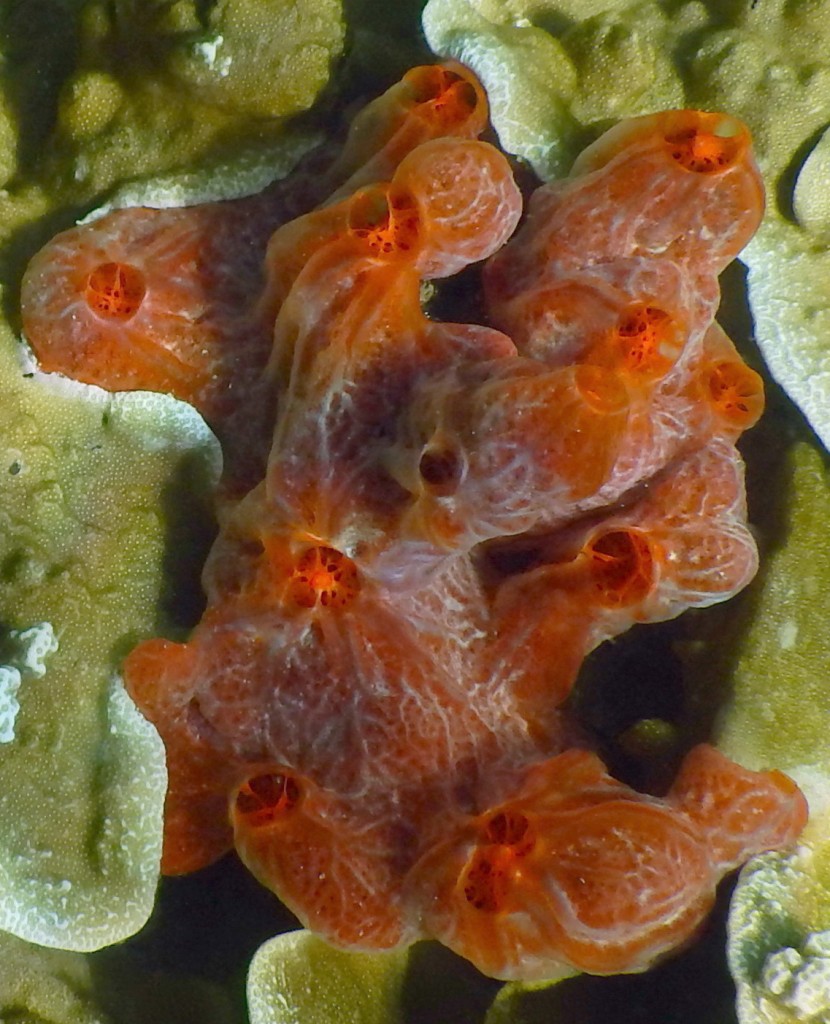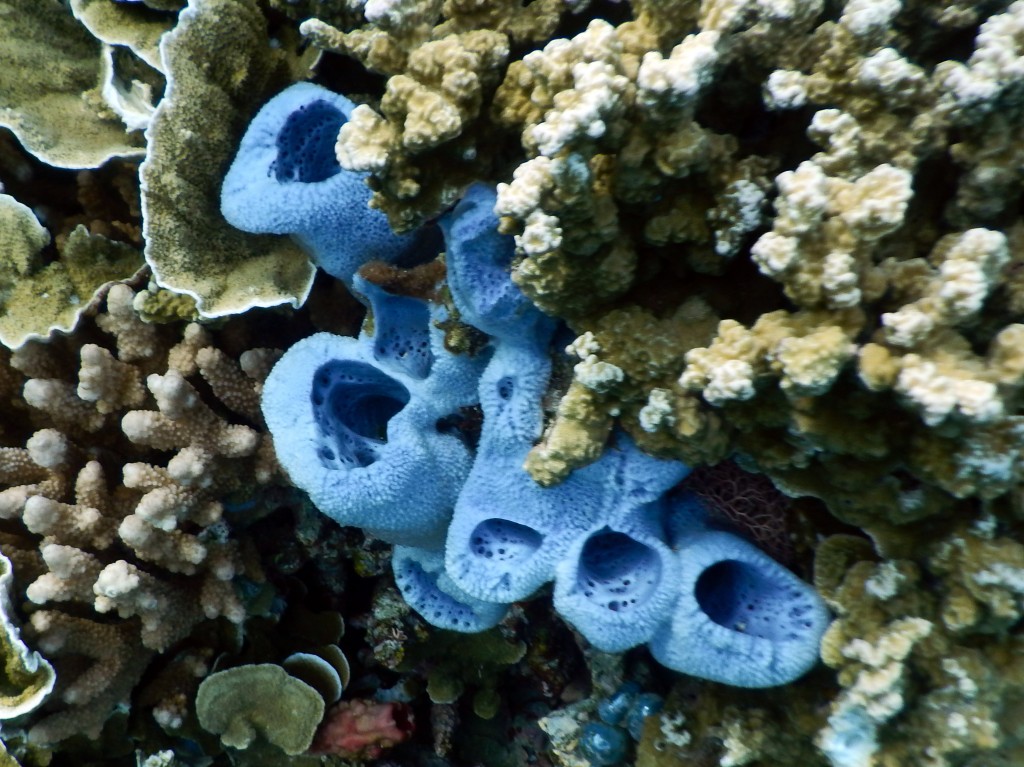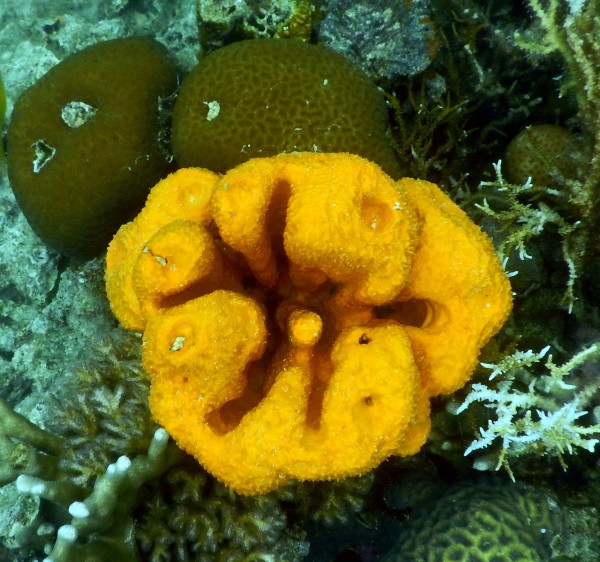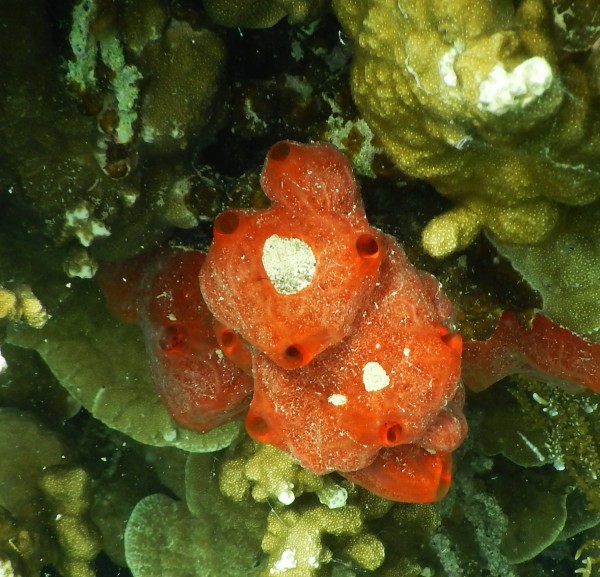Published in the Ocean Watch column, Honolulu Star-Advertiser © Susan Scott
December 7, 2015
 A sponge stands tall on a reef off Palau.
A sponge stands tall on a reef off Palau.
©2015 Susan Scott
While sorting photos from my recent trips to the western Pacific, I enlarged several shots of sponges to look down their throats. Except they don’t have throats. Or mouths, stomachs, gills, hearts or any other body parts one might call organs.
But sponges do have holes in their bodies, and it looked like something was inside the big ones. And there is. Canals.

Unlike dish washing tools and cartoon characters, real sponges aren’t square or rectangular. Living sponges are soft orange vases, squishy red barrels, slimy yellow blobs and hundreds of other colors, shapes and textures. Many are so striking that scientists are inspired. One zoology textbook author writes that sponge colors “are as vivid and varied as those of Van Gogh’s flowers.”
Although early naturalists thought sponges were plants, they are animals that strain seawater through cells in their bodies to catch bacteria and other microscopic bits of organic material. Called filter feeding, this is a way for countless marine animals to get food. But sponges invented it. They were the first creatures on Earth to eat this way, and it worked well. Over the past 600 million years, sponges evolved into at least 15,000 species and counting. Hawaii hosts more than 80.
Sponges love currents. Water enters the creatures though tiny surface pores, some invisible to the naked eye. Inside are minuscule threads that whip the water through canals supported by skeletons of protein fibers and/or minerals such as silica and calcite.
From the canals, feeding cells sift out whatever the water brought in. The cleaned water is then pumped out through its larger visible holes, the ones I was peering into.
Sponges don’t have many kinds of cells, but the ones they do have are a model of teamwork. Besides skeletal cells, feeding cells and pumping cells, unemployed cells roam the body, conveniently turning into whatever type the animal needs. In this way the sponge can remold its shape to fine-tune its feeding.
If necessary, a sponge can move to a better place. The creature walks by absorbing its skeletal cells from one side of the body and depositing them on the other. It’s slow going, but then moving the house usually is, especially when it’s an apartment building. Some species of crabs, shrimp and brittle stars (starfish relatives) live in sponge canals.
Although hawksbill turtles and some sea slugs, starfish and fish eat sponges, many species contain toxins that discourage most predators.
Living sea sponges might not have the adventures of SpongeBob SquarePants, but their colors, shapes and inner lives are just as fantastic.

